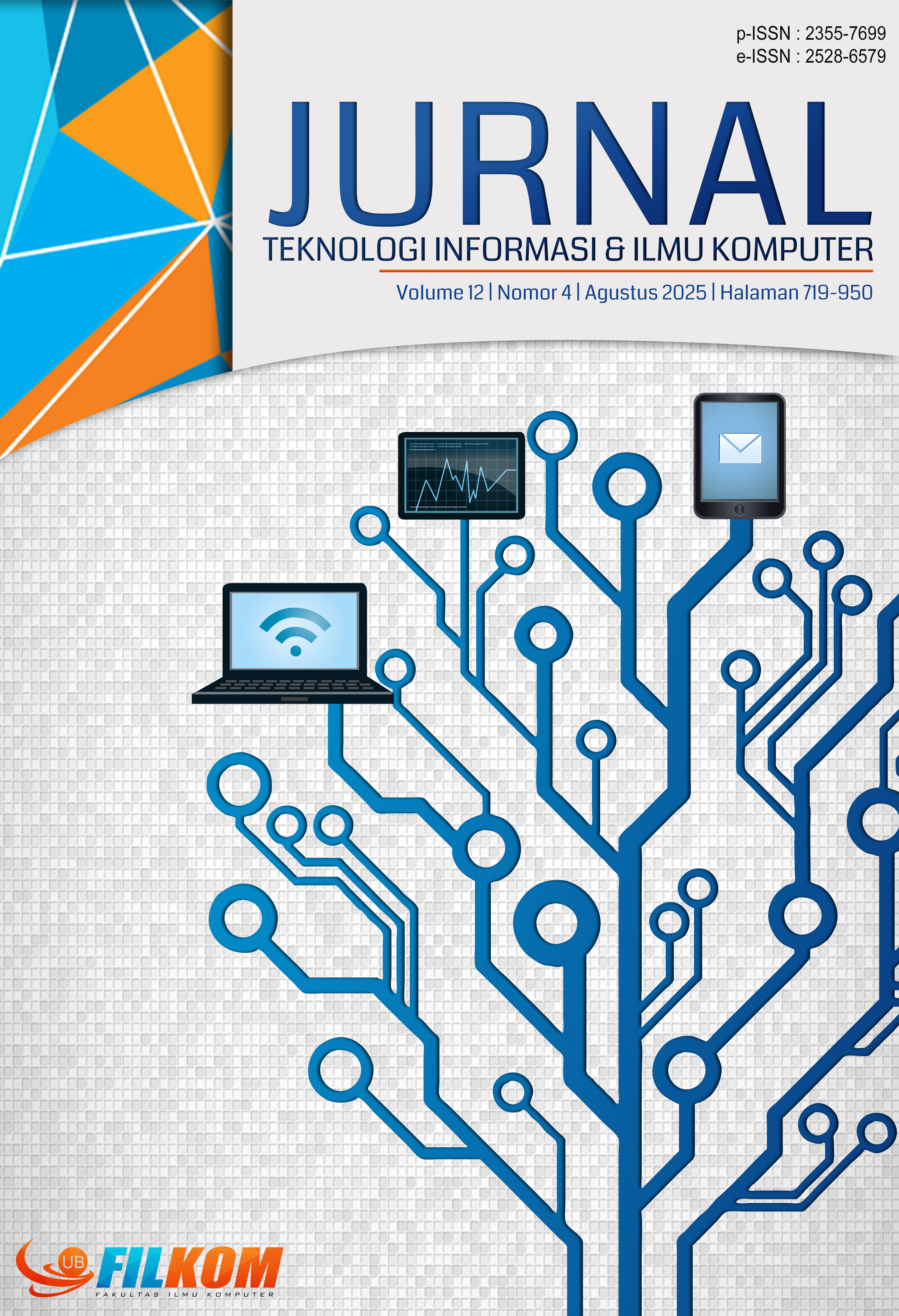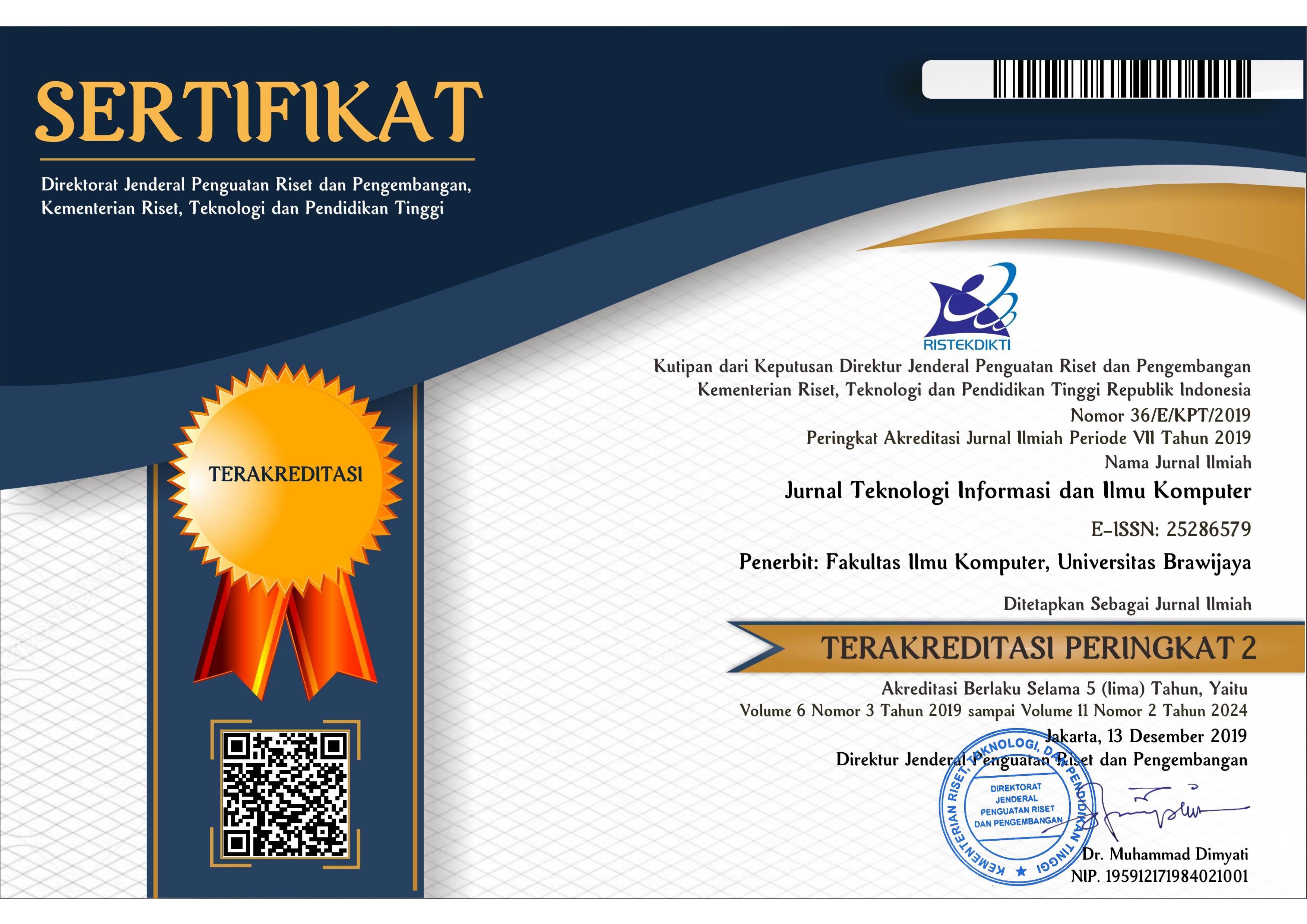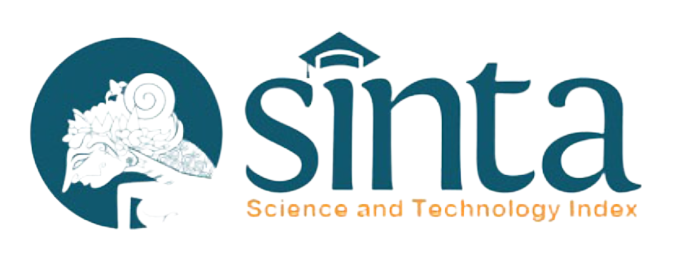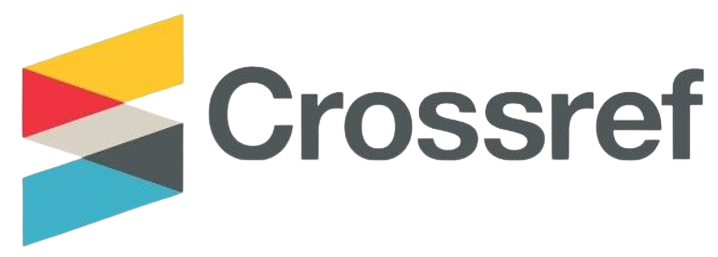Implementasi Time-Based One-Time Password Menggunakan Algoritma Photon Untuk Autentikasi Dua Faktor
DOI:
https://doi.org/10.25126/jtiik.124Kata Kunci:
Autentikasi dua faktor, TOTP, PHOTON hash, HMACAbstrak
Di era digital yang makin maju, perlindungan terhadap data sensitif menjadi sangat penting. Two-factor Authentication (2FA) atau autentikasi dua faktor adalah metode keamanan yang efektif untuk memastikan bahwa hanya pengguna sah yang dapat mengakses data atau sistem sensitif dengan mengharuskan pengguna untuk memberikan dua bentuk identifikasi yang berbeda. Salah satu metode 2FA yang banyak digunakan adalah Time-based One-Time Password (TOTP) yang menggunakan algoritma Hash-based Message Authentication (HMAC) dengan fungsi hash SHA-1. Namun, fungsi SHA-1 diketahui memiliki kelemahan keamanan. Penelitian ini bertujuan untuk meningkatkan keamanan TOTP dengan mengimplementasikan fungsi hash PHOTON, algoritma hash ringan yang dirancang dengan keamanan yang baik dan penggunaan sumber daya komputasi yang efisien. Metodologi penelitian ini melibatkan pengembangan dan pengujian sistem autentikasi dua faktor berbasis TOTP dengan algoritma HMAC yang menggunakan fungsi hash PHOTON. Hasil penelitian menunjukkan bahwa sistem mampu bertahan dari brute-force attack dan birthday attack. Selain itu, fungsi TOTP yang menerapkan PHOTON memiliki waktu eksekusi yang lebih cepat dari SHA-1 dan SHA-2.
Abstract
In the increasingly advanced digital era, protection of sensitive data is very important. Two-factor Authentication (2FA) is an effective security method to ensure that only authorized users can access sensitive data or systems by requiring users to provide two different forms of identification. One of the widely used 2FA methods is Time-based One-Time Password (TOTP) which uses the Hash-based Message Authentication (HMAC) algorithm with the SHA-1 hash function. However, the SHA-1 function is known to have security weaknesses. This study aims to improve the security of TOTP by implementing the PHOTON hash function, a lightweight hash algorithm designed with good security and efficient use of computing resources. The research methodology involves the development and testing of a TOTP-based two-factor authentication system with the HMAC algorithm using the PHOTON hash function. The results of the study show that the system is able to withstand brute-force attacks and birthday attacks. In addition, the TOTP function implementing PHOTON has a faster execution time than SHA-1 and SHA-2.
Downloads
Referensi
BARKADEHI, M.H., NILASHI, M., IBRAHIM, O., ZAKERI FARDI, A. and SAMAD, S., 2018. Authentication systems: A literature review and classification. Telematics and Informatics, 35(5), pp.1491–1511. Tersedia di:<https://doi.org/10.1016/J.TELE.2018.03.018> [Diakses 5 Desember 2024].
BASAR, M.S., 2011. Summarizing data for secure transaction: A hash algorithm. African Journal of Business Management, 5(34), p.13211.
BHANDERI, D., KAVATHIYA, M., BHUT, T., KAUR, H. and MEHTA, M., 2023. Impact of Two-Factor Authentication on User Convenience and Security. In: 2023 10th International Conference on Computing for Sustainable Global Development (INDIACom). IEEE. pp.617–622.
DSILVA, R. & SHETTY, S., 2023. Applications, attacks, and advancements in cryptography and network security hash functions: a review. International Research Journal of Modernization in Engineering Technology and Science, 5(5). Tersedia di: <https://www.doi.org/10.56726/IRJMETS3937> [Diakses 22 September 2024].
EZUGWU, A., UKWANDU, E., UGWU, C., EZEMA, M., OLEBARA, C., NDUNAGU, J., OFUSORI, L. and OME, U., 2023. Password-based authentication and the experiences of end users. Scientific African, 21, p.e01743. Tersedia di: <https://doi.org/10.1016/J.SCIAF.2023.E01743> [Diakses 20 November 2023].
GUIDO, B., JOAN, D., MICHAËL, P. and GILLES, V.A., 2011. Cryptographic sponge functions.
GUO, J., PEYRIN, T. and POSCHMANN, A., 2011. The PHOTON family of lightweight hash functions. Lecture Notes in Computer Science (including subseries Lecture Notes in Artificial Intelligence and Lecture Notes in Bioinformatics), [online] 6841 LNCS, pp.222–239. Tersedia di: <https://doi.org/10.1007/978-3-642-22792-9_13/COVER> [Diakses 31 Agustus 2023]
KRAWCZYK, H., BELLARE, M. and CANETTI, R., 1997. RFC2104: HMAC: Keyed-hashing for message authentication.
M’RAIHI, D., MACHANI, S., PEI, M. and RYDELL, J., 2011. TOTP: Time-Based One-Time Password Algorithm. [online] Tersedia di: <https://doi.org/10.17487/RFC6238> [Diakses 31 Agustus 2023]
MIHAILESCU, M.I., NITA, S.L., 2021. Hash functions. Cryptography and Cryptanalysis in MATLAB: Creating and Programming Advanced Algorithms, pp.83-102.
OZKAN, C. and BICAKCI, K., 2020. Security analysis of mobile authenticator applications. In: 2020 International Conference on Information Security and Cryptology (ISCTURKEY). IEEE. pp.18–30.
PAPATHANASAKI, M., MAGLARAS, L., & AYRES, N., 2022. Modern authentication methods: A comprehensive survey. AI, Computer Science and Robotics Technology.
VIJAYACHANDRAN, A., KUMAR, K.G. and STUDENT, ], 2016. Anonymous Two-Factor Authentication in Distributed Systems. International Journal of Computer Science Trends and Technology, [online] 4. Tersedia melalui: [Diakses 1 August 2024].
ZULKARNAIN, S., IDRUS, S., CHERRIER, E., ROSENBERGER, C. and SCHWARTZMANN, J.-J., 2013. A Review on Authentication Methods. Australian Journal of Basic and Applied Sciences, [online] 7(5), pp.95–107. Tersedia di: <https://hal.science/hal-00912435> [Diakses 5 Desember 2023].
Unduhan
Diterbitkan
Terbitan
Bagian
Lisensi
Hak Cipta (c) 2025 Jurnal Teknologi Informasi dan Ilmu Komputer

Artikel ini berlisensiCreative Commons Attribution-ShareAlike 4.0 International License.

Artikel ini berlisensi Creative Common Attribution-ShareAlike 4.0 International (CC BY-SA 4.0)
Penulis yang menerbitkan di jurnal ini menyetujui ketentuan berikut:
- Penulis menyimpan hak cipta dan memberikan jurnal hak penerbitan pertama naskah secara simultan dengan lisensi di bawah Creative Common Attribution-ShareAlike 4.0 International (CC BY-SA 4.0) yang mengizinkan orang lain untuk berbagi pekerjaan dengan sebuah pernyataan kepenulisan pekerjaan dan penerbitan awal di jurnal ini.
- Penulis bisa memasukkan ke dalam penyusunan kontraktual tambahan terpisah untuk distribusi non ekslusif versi kaya terbitan jurnal (contoh: mempostingnya ke repositori institusional atau menerbitkannya dalam sebuah buku), dengan pengakuan penerbitan awalnya di jurnal ini.
- Penulis diizinkan dan didorong untuk mem-posting karya mereka online (contoh: di repositori institusional atau di website mereka) sebelum dan selama proses penyerahan, karena dapat mengarahkan ke pertukaran produktif, seperti halnya sitiran yang lebih awal dan lebih hebat dari karya yang diterbitkan. (Lihat Efek Akses Terbuka).















